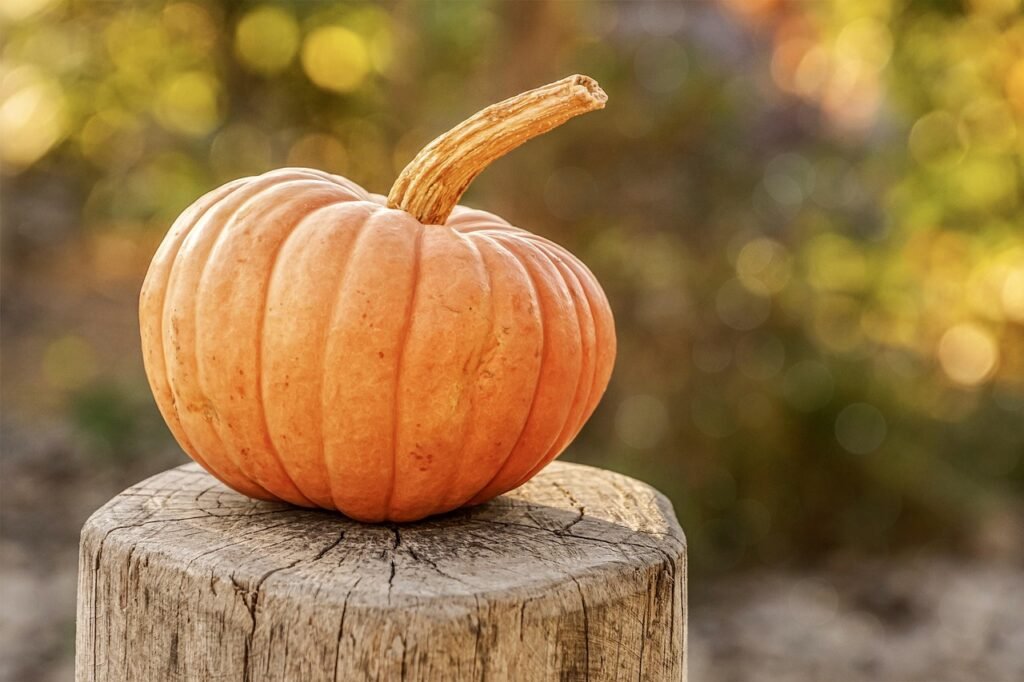The Surprising Truth Behind Pumpkin Pie Nutrition Facts
Pumpkin pie nutrition facts reveal this classic holiday dessert has more to offer than just sweet satisfaction. As autumn leaves fall and holiday gatherings approach, many health-conscious individuals find themselves wondering whether indulging in this traditional treat aligns with their wellness goals. The good news? This seasonal favorite contains several beneficial nutrients alongside its undeniable comfort-food appeal.
Unlike many desserts that offer little nutritional value, pumpkin pie combines the natural goodness of its star vegetable with a blend of spices and other ingredients that can contribute positively to overall health. Understanding the nutritional composition of pumpkin pie empowers mindful eaters to make informed choices during the holiday season.
Breaking Down Pumpkin Pie Nutrition Facts
A standard slice of commercially prepared pumpkin pie (approximately 150 grams) contains a specific nutritional profile worth examining in detail:
Caloric Content and Macronutrients
According to USDA data, a typical slice of pumpkin pie provides:
- Calories: 374
- Carbohydrates: 54 grams (including 36 grams of sugar)
- Fat: 14 grams
- Protein: 5 grams
- Fiber: 2.5 grams
These figures represent the average nutritional content of traditional recipes, though homemade versions can vary significantly based on preparation methods and ingredient choices.
Vitamin and Mineral Content
What distinguishes pumpkin pie from many other desserts is its impressive micronutrient profile:
- Vitamin A: Approximately 490 micrograms per slice, representing over 50% of the recommended daily allowance (RDA). This essential nutrient supports vision health, particularly in low-light conditions, and contributes to immune function and cellular communication.
- Vitamin E: Contains about 1-1.5 milligrams per slice (7-10% of RDA), supporting skin health by maintaining its natural moisture barrier and contributing to antioxidant protection.
- Potassium: Provides approximately 6.5% of the RDA per slice, supporting healthy blood pressure regulation and cardiovascular function.
- Calcium, Phosphorus, and Iron: Present in moderate amounts, these minerals support bone health, energy metabolism, and oxygen transport throughout the body.
Notably, these nutritional benefits derive primarily from the pumpkin itself, rather than the sugary filling or buttery crust that accompany it in traditional recipes.
The Health Benefits Hidden in Your Slice
Pumpkin: The Nutritional Powerhouse
The star ingredient in pumpkin pie offers significant health benefits that partially offset the dessert’s sugar and fat content:
1. Eye Health Support
The substantial vitamin A content in pumpkin contributes to visual health maintenance. This fat-soluble vitamin plays a crucial role in night vision, helping the eyes adjust to darkness. Regular consumption of vitamin A-rich foods may help reduce age-related macular degeneration risk.
2. Immune System Reinforcement
Vitamin A also serves as an important immune system supporter, helping the body defend against infections and maintain tissue integrity. During cold and flu season, which often coincides with holiday celebrations, these immune-supporting nutrients prove particularly valuable.
3. Antioxidant Protection
Pumpkin contains beta-carotene, which the body converts to vitamin A and which acts as an antioxidant, helping neutralize free radicals that can damage cells and contribute to chronic diseases and aging.
4. Digestive Support
The fiber content in pumpkin, while modest in a pie slice, contributes to digestive health by supporting regular bowel movements and feeding beneficial gut bacteria. This digestive benefit becomes especially relevant during holiday seasons when many traditional foods lack adequate fiber.
Seasonal Spices: Beyond Flavor Enhancement
Traditional pumpkin pie spices offer their own health benefits:
- Cinnamon: Contains anti-inflammatory compounds and may help regulate blood sugar levels
- Nutmeg: Provides small amounts of minerals like manganese, copper, and magnesium
- Ginger: Offers digestive support and anti-inflammatory properties
- Cloves: Contain eugenol, a compound with antioxidant and anti-inflammatory properties
These warming spices not only create the characteristic flavor profile that makes pumpkin pie beloved but also contribute complementary health properties to the dessert.
Pumpkin Pie in Context: Comparative Nutrition
Understanding how pumpkin pie compares to other holiday dessert options provides helpful perspective for making mindful choices:
Pumpkin Pie vs. Other Holiday Favorites
When comparing similar serving sizes (approximately 120-150g slice):
| Nutrient | Pumpkin Pie | Apple Pie | Pecan Pie |
| Calories | 280-320 | 300-350 | 500-550 |
| Total Sugar | 25-30g | 30-35g | 35-40g |
| Total Fat | 12-15g | 14-18g | 25-30g |
| Fiber | 2-3g | 3-4g | 2-3g |
This comparison reveals that pumpkin pie generally offers a more favorable nutritional profile than many alternative holiday desserts. With fewer calories, less fat, and lower sugar content than pecan pie, and competitive nutritional value compared to apple pie, pumpkin pie represents a relatively sensible choice for those monitoring their nutritional intake during celebrations.
The vitamin A content in pumpkin pie substantially exceeds that found in either apple or pecan varieties, offering a nutritional advantage unique to this seasonal favorite.
Enhancing the Nutritional Profile: Healthier Pumpkin Pie Options
While traditional pumpkin pie offers nutritional benefits, several modifications can improve its health profile without sacrificing taste:
Ingredient Substitutions for Healthier Pumpkin Pie
1. Natural Sweetener Alternatives
Replacing refined white sugar with pure maple syrup or honey not only enhances flavor complexity but also introduces additional nutrients and potentially reduces the overall glycemic impact. These natural sweeteners contribute trace minerals and antioxidant compounds absent in refined sugar.
2. Dairy Modifications
Substituting heavy cream with Greek yogurt maintains the creamy texture while reducing fat content and increasing protein. This modification creates a more satisfying dessert that may help prevent overindulgence.
3. Crust Considerations
Several options exist for improving the nutritional value of the traditionally butter-laden crust:
- Using whole grain flour instead of refined white flour increases fiber content
- Creating a nut-based crust adds heart-healthy fats and reduces refined carbohydrates
- Preparing a crustless pumpkin pie eliminates substantial calories and fat while highlighting the nutritious filling
4. Spice Enhancement
Increasing the proportion of spices not only intensifies flavor but potentially reduces the amount of sugar needed. Cinnamon in particular may help regulate blood sugar response, making it a valuable addition beyond its taste contribution.
5. Creative Nutritional Boosters
Adventurous bakers might consider incorporating:
- Pureed butternut squash or sweet potato alongside pumpkin for additional nutrients
- Chia seeds or ground flaxseed for omega-3 fatty acids and additional fiber
- White beans for undetectable protein enrichment
These modifications can transform traditional pumpkin pie into a significantly more nutritious dessert without compromising the familiar taste and texture that make it a holiday favorite.
Mindful Enjoyment: Balancing Nutrition and Pleasure
Understanding pumpkin pie nutrition facts allows for informed enjoyment rather than restriction. The following strategies support a balanced approach to seasonal indulgence:
Mindful Eating Practices for Pumpkin Pie
Sensory Engagement
Taking time to appreciate the appearance, aroma, and texture of pumpkin pie before eating enhances satisfaction. This sensory engagement often leads to greater enjoyment from smaller portions.
Environmental Awareness
Creating a dedicated space for dessert enjoyment, free from distractions like television or smartphones, promotes connection with the eating experience and prevents unconscious overconsumption.
Deliberate Pacing
Slowing down the eating process by taking smaller bites and setting the fork down between them allows the body to register fullness signals more effectively. This technique often leads to natural portion control.
Portion Perspective
Recognizing that satisfaction often comes from quality rather than quantity helps manage serving sizes without feelings of deprivation. A smaller slice savored mindfully often provides more pleasure than a larger portion consumed automatically.
Physical Awareness
Checking in with hunger and fullness cues during dessert consumption supports the body’s natural regulation mechanisms. Stopping when comfortably satisfied, even if food remains, honors both health goals and pleasure.
The Balanced Perspective: Enjoying Seasonal Foods Healthfully
Pumpkin pie nutrition facts reveal that this holiday classic can absolutely fit into a balanced approach to eating. The substantial vitamin A content, along with other nutrients contributed by the pumpkin and spices, partially offsets the sugar and fat content that characterize most desserts.
When prepared with thoughtful ingredient modifications and consumed with mindful awareness, pumpkin pie represents more than just a seasonal indulgence—it offers a connection to tradition that need not conflict with health-conscious eating habits.
The key lies not in categorizing foods as “good” or “bad,” but in understanding their nutritional profiles and making informed choices that honor both physical wellbeing and the psychological benefits of celebrating special occasions with traditional foods.
Practical Implementation: Pumpkin Pie in a Balanced Holiday Meal
Incorporating pumpkin pie into a balanced holiday meal plan involves considering the entire eating experience:
Strategic Meal Planning
Approaching the holiday meal with awareness of overall nutritional balance allows for dessert inclusion without compromise. Emphasizing protein and fiber-rich options during the main meal creates room for moderate dessert portions without nutritional concern.
Addressing Special Dietary Considerations
Those with specific health conditions can adapt pumpkin pie to accommodate their needs:
- Diabetes management: Creating lower-sugar versions or reducing portion size
- Gluten sensitivity: Utilizing alternative crust options or going crustless
- Heart health concerns: Focusing on portion control and healthier fat sources
The Psychological Component
Recognizing that holiday traditions carry significant emotional weight prevents the unnecessary stress that often accompanies food restriction. Allowing moderate enjoyment of traditional foods like pumpkin pie supports mental wellbeing alongside physical health.
Conclusion: Embracing Pumpkin Pie with Knowledge and Balance
Pumpkin pie nutrition facts demonstrate that this beloved dessert offers more nutritional benefits than many alternatives. With its significant vitamin A content, moderate calorie profile compared to other desserts, and potential for healthy ingredient modifications, pumpkin pie can be enjoyed as part of a balanced approach to holiday eating.
Rather than approaching seasonal foods with restriction and guilt, understanding their nutritional composition empowers mindful choices that honor both health goals and the joy of celebration. By applying thoughtful ingredient substitutions, practicing mindful eating techniques, and maintaining perspective on overall dietary patterns, pumpkin pie can remain a welcome part of holiday traditions.
The true magic of seasonal eating lies not in perfect adherence to nutritional ideals but in finding the balance that nourishes both body and spirit. Pumpkin pie, with its surprising nutritional benefits and deep cultural significance, beautifully illustrates this balanced approach to food enjoyment.


